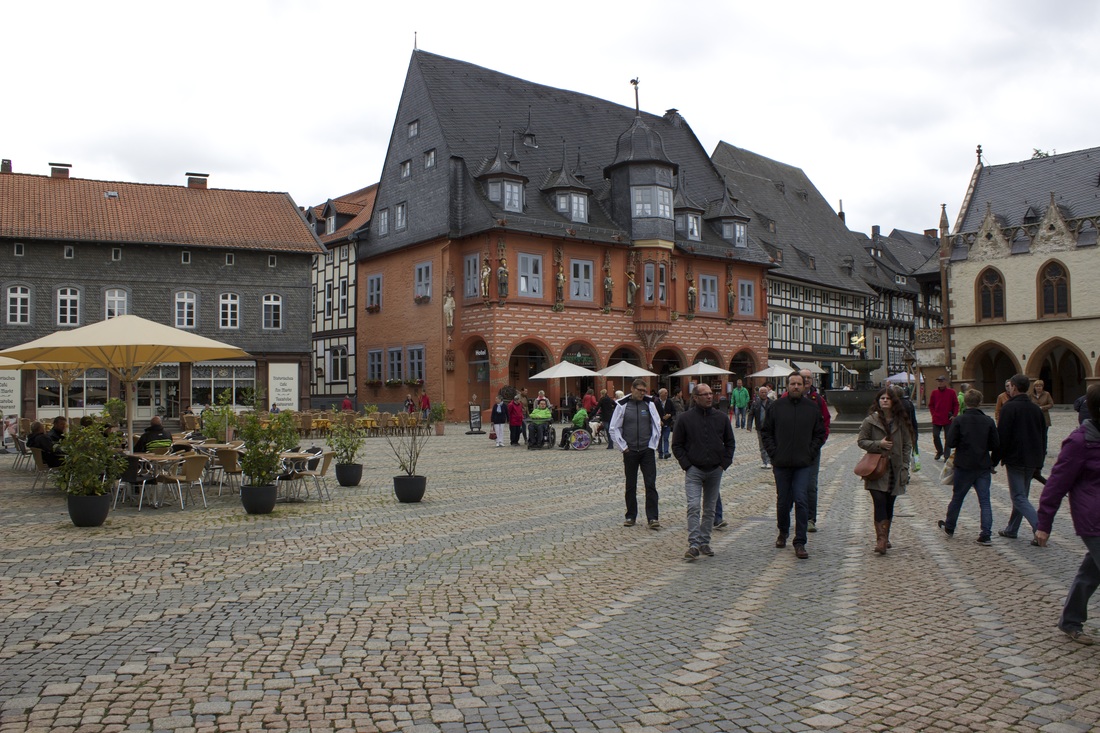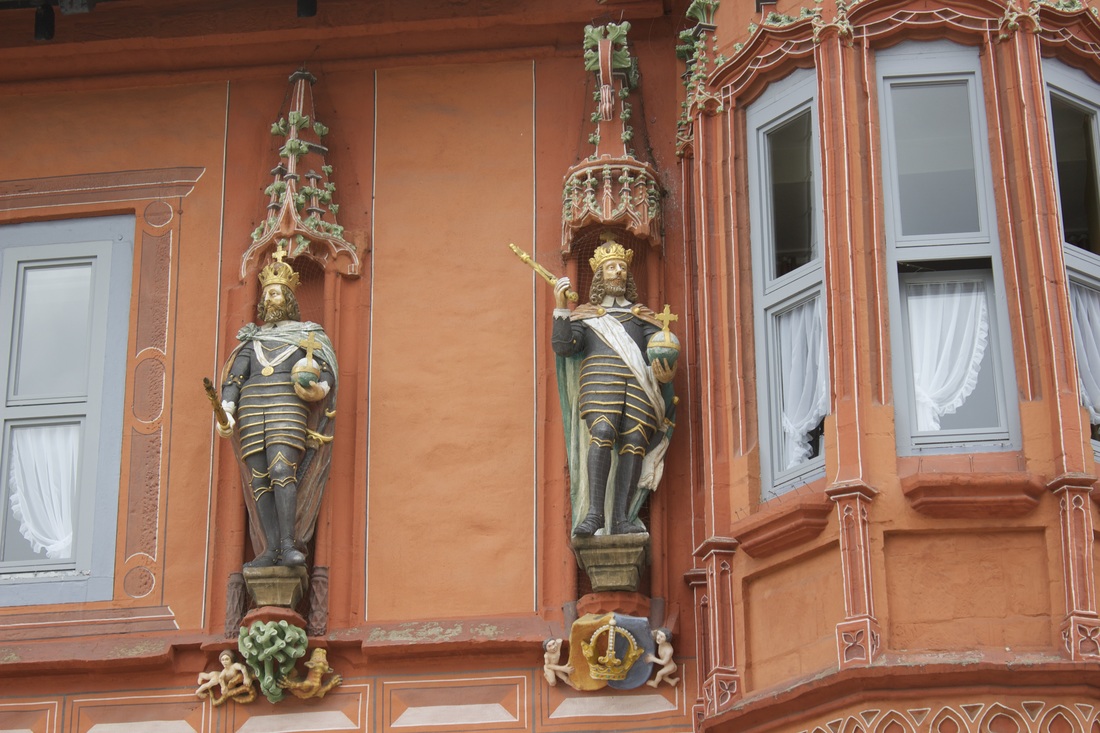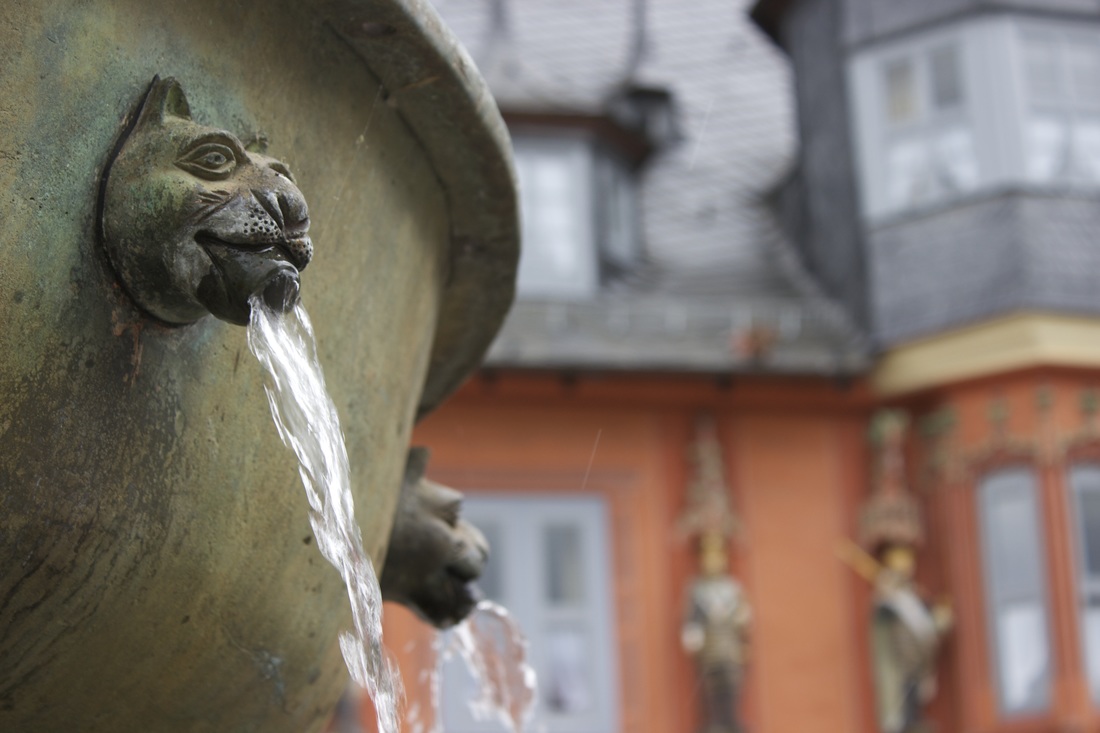Known as the “Queen of the Harz”, the only thing missing are the jesters, peasants and children wearing rags that meander the streets. Goslar is an untouched and majestic medieval town that sparkles with history. The only way to describe Goslar is that it really is a fairy-tale town pulled directly from a Grimm Brother’s book. Just by the looks of the buildings you can feel the existence of Hansel and Gretel come alive.
Along with colorful facades and blooming plant life, you’ll also explore “modern” Germany where the Apothekes (pharmacy) open 8-1 on Saturdays and 10-1 / 2-6pm during the week, a life that maybe once existed in 1930 America. So, if you think your heart may go "kaputz," stay away from the wurst and bring extra meds.
The two most impressive buildings are the Gothic Kaiserworth and town hall. The Baroque figures still stand on Kaiserworth boasting the best of Gothic-architecture. History dates back to 1494 where clothed-merchants build their immediate guild hall.
Another prominent landmark is the Market Fountain. Topped with a golden Eagle, this fountain marks the center of Goslar and its market square. The lower basin was constructed in the 12th Century flaunting the Romanesque times. One hundred years later, locals added the upper bowl while the eagle perched its throne in the 13th Century. However, the eagle’s crown dates to the 18th Century. Although pieced together through time, it’s the perfect place to toss a Euro and make a wish. I’m still waiting for mine to come true, but you know, patience.
Witches play a large roll in Germany’s medieval history. Wurzburg is known for the largest witch trial in the Deutschland, but Goslar does not shy away from its dark past and The Harz Witch Trials. Known as the modern day aromatherapist, witches brewed up plenty of medicinal cures for people in need. They understood nature, the same as the modern day tea mixer.
If you get a chance to stop at the Elke Walter tea shop located near Market Square, I highly recommend spending the two-euro on a bag of loose-leaf “hexenpunsch” or witch’s punch.
Nearby is the Tin Figure Museum, which is a must-see in Goslar. Set in a 16th Century building, local artists keep history alive by creating, constructing tin figures. The two floor museum shows approximately ten thousand handmade and painted tin figures to show the best of Goslar’s thousand-year-old history. There is really no other word other than “cute” to describe the pride and care that goes into bringing tradition alive.
Can you imagine what Germany would have looked like if World War II never happened? I can only imagine that it looked a lot like Goslar…
This Lemon Tree article is now featured on GPSmyCity. To download this article for offline reading or travel directions to the attractions highlighted in this article, go to Goslar, Germany: A Place Where Medieval Life is Still Alive
Let's Connect!



















 RSS Feed
RSS Feed